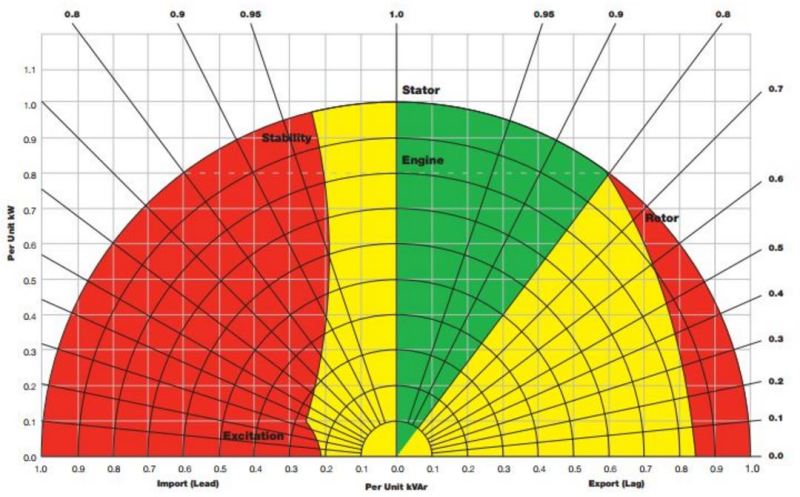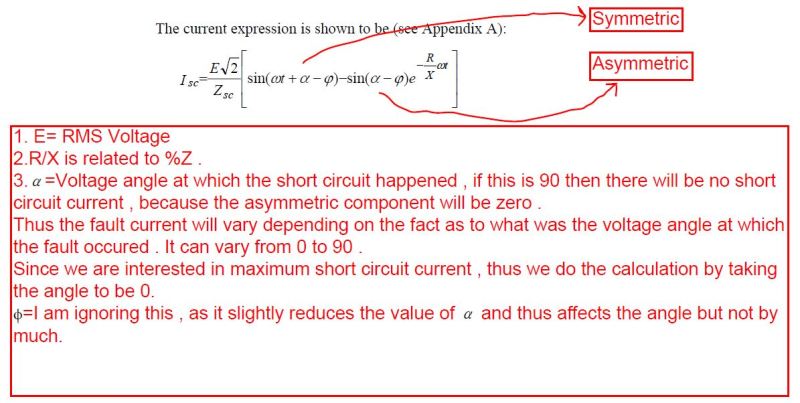AppleJaxJap
Electrical
- Jul 1, 2016
- 17
I have a generator for a project. in this example it is a 2000KW/2500KVA .8 PF and 480V so the full load amps @ 80% PF is 3007A
However, if this same generator was running at unity power factor then the most amps that I could get from it is 2406A.
The X”d for this unit is let’s say 10%
This unit has an HRG and there are only 3 wires no neutral. so only LLL and LL faults need to be considered That gives us a 3P fault current of 30,070A
My question:
A bolted fault is just a low resistive path why do I need to consider power factor on the faulted path?
In my way of thinking the bolted fault should happen at unity power factor and the available FC should be 24,060A and not 30,070A.
No literature shows this so I realize I must be missing something. What is it?
However, if this same generator was running at unity power factor then the most amps that I could get from it is 2406A.
The X”d for this unit is let’s say 10%
This unit has an HRG and there are only 3 wires no neutral. so only LLL and LL faults need to be considered That gives us a 3P fault current of 30,070A
My question:
A bolted fault is just a low resistive path why do I need to consider power factor on the faulted path?
In my way of thinking the bolted fault should happen at unity power factor and the available FC should be 24,060A and not 30,070A.
No literature shows this so I realize I must be missing something. What is it?



![[cry] [cry] [cry]](/data/assets/smilies/cry.gif)